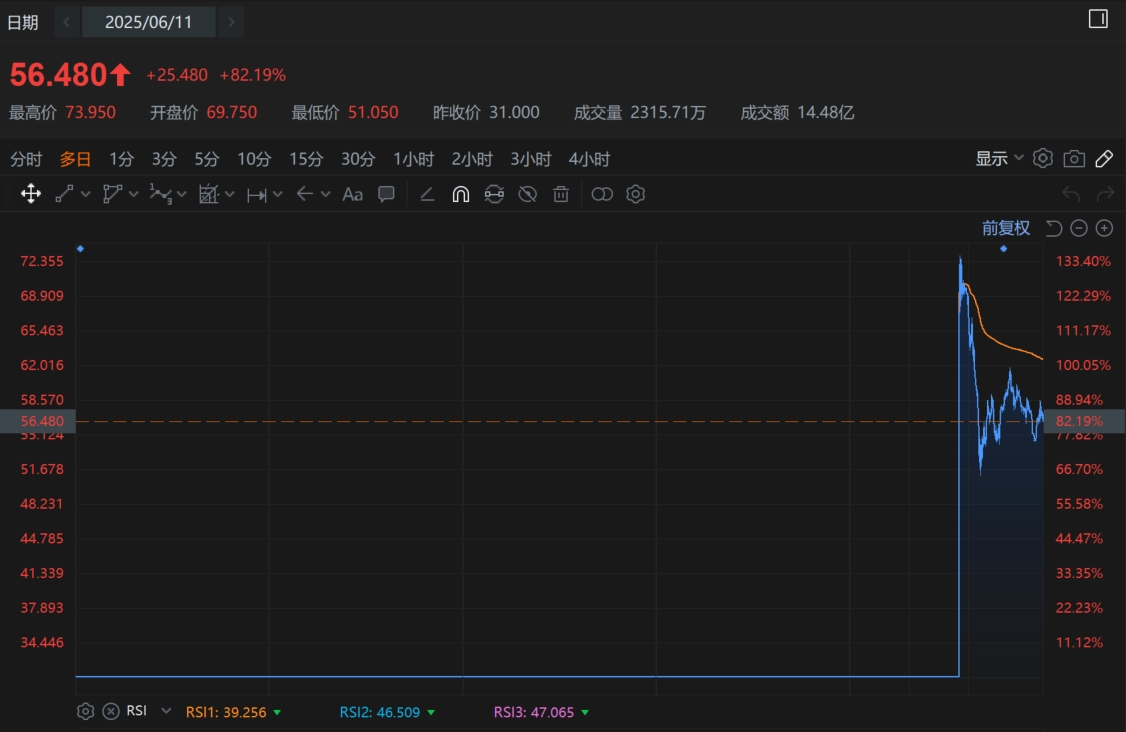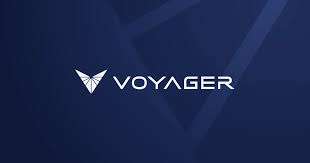Voyager holds a $217.5 million NASA research and development grant contract in his hands.
On June 12, U.S. aerospace defense company Voyager Technologies closed at US$56.48 on its first day of listing, a surge of 82.19% from the issue price of US$31. The intraday increase once exceeded 138% to US$73.95.

The company, formerly known as Voyager Space, expanded its offering size from a planned 11 million shares to 12.3 million shares thanks to strong demand for oversubscription by more than 20 times. It ultimately raised US$383 million and its market value jumped to US$3.2 billion.
At the heart of this valuation jump is Voyager's $217.5 million NASA research and development grant contract.
The funding is earmarked for the design of a commercial space station called "Starlab", which is scheduled to replace the retiring International Space Station (ISS) in 2030.As a key part of NASA's strategy to promote the commercialization of low-Earth orbit, the Starlab project brings together a luxury alliance composed of European aviation giants Airbus, Japan's Mitsubishi Corporation, Canada's MDA Space, and Silicon Valley AI star company Palantir.Particularly noteworthy is that Voyager chose SpaceX's Starship as the space station launch platform. This cooperation not only reduced technical risks, but also transformed Musk's disruptive innovations in the space launch market into thrusters for his own projects.
Although the stock price has soared, the financial data disclosed in the prospectus is very fragmented: in 2024, the company's revenue was US$144 million, but the net loss was as high as US$65.63 million; in the first quarter of 2025, the revenue of US$34.51 million increased by 14.2% year-on-year, but the net loss increased by 87% year-on-year to US$27.93 million-this revenue reveals the characteristics of the space infrastructure industry: huge initial capital expenditures and long profit cycles.
In contrast, investors clearly value the certainty of their order construction: in addition to NASA contracts, the U.S. government and its subsidiaries contributed 84% of the company's revenue source in 2024, while Trump's recently announced "Golden Dome" The space-based missile defense system program (expected to have a total investment of US$175 billion) may bring new volume.Last year, Voyager was selected by Lockheed Martin to provide a solid propulsion subsystem for the U.S. Missile Defense Agency's next-generation interceptors, demonstrating its depth of penetration in the defense field.
The restructuring of the investment logic of the space economy is particularly evident in Voyager's listing node.
Compared with the traditional military industry model that relies on cost-plus contracts, emerging forces represented by SpaceX and Voyager adopt the "fixed cost method" to cooperate with the government-NASA pays fixed funds, the project balance is corporate profits, and overruns are borne by themselves.This mechanism forces technological innovation and cost control, creating a rapid iteration capability similar to Silicon Valley.
Capital market recognition is increasing: Space company Karman Holdings, which went public in February this year, is currently up 109% from its offering price, while Voyager performed better on its first day.Rob DeSobler, managing director of Seraphim Space Investment Trust, commented: "This IPO marks the space sector's move towards higher commercial maturity and may set a benchmark for subsequent public offerings in the industry.”
However, the competitive landscape for commercial space stations is far from finalized.Blue Origin relies on Bezos 'capital advantages to promote the "Obita" space station, Houston's Axiom Space has launched the International Space Station commercial module docking program, and California's Vast Corporation focuses on the microgravity research platform.
Facing its strong rival, Voyager's differentiated path lies in building a "defense-space" dual engine: its business is divided into three major segments: defense security (communications technology, guidance and navigation), space solutions (infrastructure, technology development), and Starlab Space Station.This structure can not only maintain cash flow through military products business, but also occupy the entrance to the future orbital economy with the space station. It is more in line with the military-civilian technology integration strategy promoted by the U.S. Defense Innovation Unit (DIU)-just as Palantil invested from the CIA The start-up company has grown into an "AI arms dealer" with a market value of US$173.2 billion, surpassing the case of the five traditional military giants.
It is worth noting that founder Dylan Taylor controls 65.1% of the voting power by holding 100% of Class B shares. This structure not only ensures control, but also suggests that the company may continue Silicon Valley's "mission enterprise" characteristics-investors need to tolerate short-term losses in exchange for long-term gains from disruptive technologies.
Palantir's role as a shareholder and strategic partner further strengthens its "new military industry" attributes: not only do the two parties cooperate to develop the International Space Station payload scheduling system, Palantir's AI platform is more likely to inject intelligent operation and maintenance capabilities into Starlab.When OpenAI and Anduril formed an alliance to provide AI solutions to the Department of Defense, the collaboration between Voyager and Palantir was a space version of the same logic.


